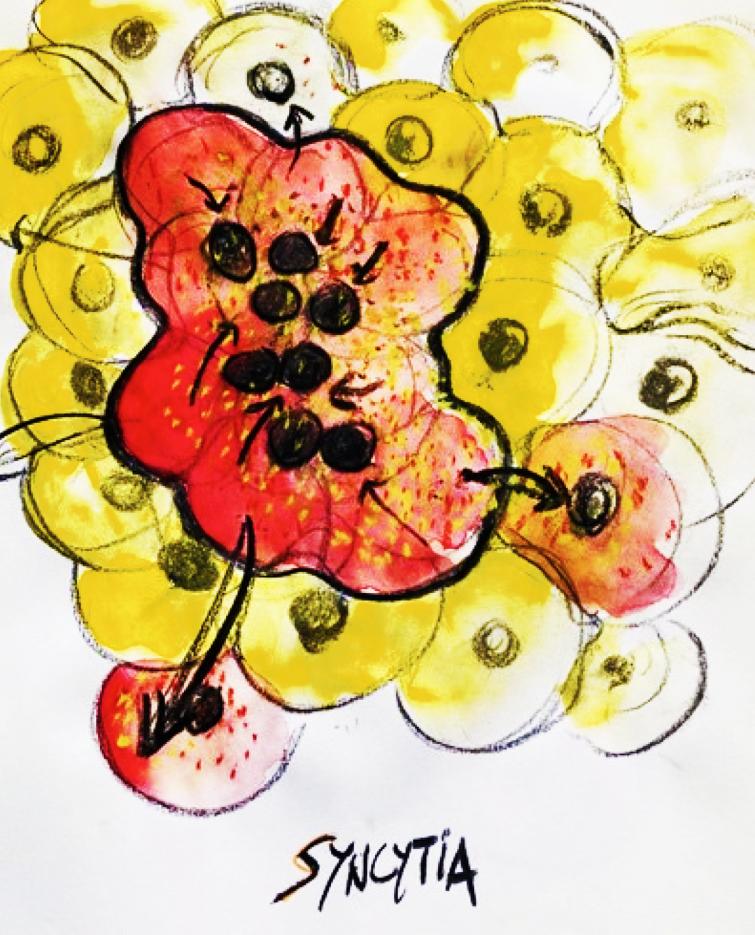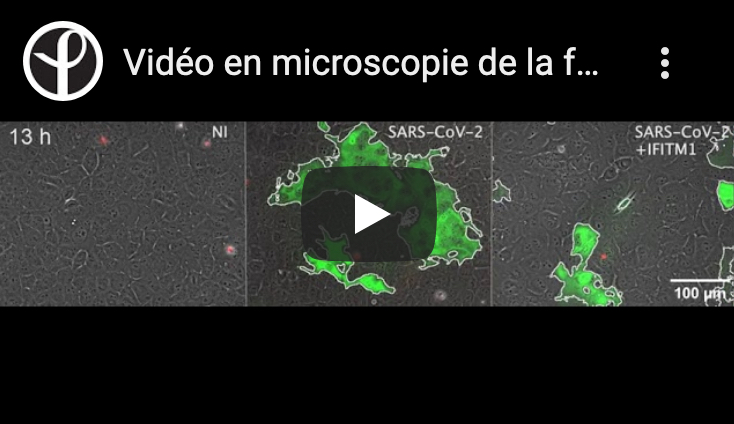
 CORONAVIRUS
CORONAVIRUS
Innate immunity and fusion of cells infected with SARS-CoV-2
Innate immunity is the fastest-acting component of the immune system, but so far little is known about its role during infection with SARS-CoV-2. A few hours after an infection, the body emits an alarm signal, interferon, enabling cells that have not yet been infected to produce antiviral proteins. This phenomenon occurs well before the production of neutralizing antibodies.
Scientists from the Institut Pasteur and the CNRS set out to investigate the consequences of SARS-CoV-2 infection for cell function and the antiviral role of innate immunity. Using real-time video microscopy, they showed that infected cells in culture can fuse with neighboring cells and die after forming giant cells known as "syncytia," composed of dozens of other cells. But interferon counters this phenomenon by inducing cellular proteins that prevent the fusion of infected cells.
These results showing the antiviral effect of innate immunity are available online on The EMBO Journal.
Video microscopy showing syncytium formation following SARS-CoV-2 infection.
"Représentation des cellules fusionnées" by Fabrice Hyber. © Institut Pasteur
